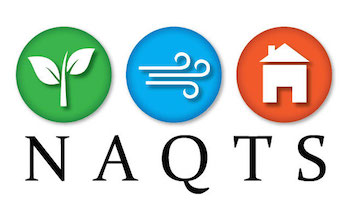Radon is the second leading cause of lung cancer in the UK. All buildings contain radon, but depending on where you live in the UK, the chance that you have a potential health related issue (above the recommended action level) will vary widely from around 1 in 100 to 1 in 3 homes). That is why it is important to find out the levels in your home and in your school or workplace.
Radon is a cancer-causing heavy radioactive gas which has no colour, smell, or taste. It is formed by the radioactive decay of the small amounts of uranium that occur naturally in all rocks and soils. When radon decays (radioactive half-life of 3.8 days), the decay process generates an alpha particle which has a high relative biological effectiveness (RBE) as well as decaying into radioactive isotopes of Polonium and Lead. Unlike the gaseous radon itself, these products are solid particles and stick to surfaces, such as dust particles in the air which then enter the airways of the lung and get collected. Inside the lungs, these elements continue to decay and emit radiation. Not surprisingly, if you smoke and your home has high radon levels, you’re at an even higher risk for developing lung cancer because of the above delivery mechanism of the cell-damaging radioactive materials to the lungs.
We are all exposed to radiation from natural and man-made sources. Just 20 Bq m-3 (the average radon level in UK homes), gives us half our exposure to radiation from all sources. Higher radon levels give higher exposures: that is why it is important to find out the levels in your home and in your school or workplace.
Some scientific studies of radon exposure indicate that children may be more sensitive to radon. This may be due to their higher respiration rate and their rapidly dividing cells, which may be more vulnerable to radiation damage.

A European study, funded by Cancer Research UK and the European Commission showed that radon in the home increases the risk of lung cancer. In an independent report, Radon and Public Health estimated that radon is a cause in over 1,100 lung cancer deaths each year in the UK. Whereas, the National Radiological Protection Board (NRPB) estimates that 2000-3000 people in the UK die each year from radon-induced lung cancer. The Health Protection Agency‟s (HPA) Independent Advisory Group on Ionising Radiation estimates that residential radon exposure contributed to about 1,000 (or 3% of total) UK lung cancer deaths in 2009. Whichever figure one uses, what is clear is there are a considerable amount of preventable deaths every year.
Our goal is to increase awareness of radon so that people can make a decision whether or not to test their home (we recommend that all homes are tested). Radon testing is the only way to know whether a building contains elevated levels of radon and whether the occupants are at risk of developing lung cancer.
The UK Target level is 100 Bq m-3, anything above 200 Bq m-3 and you are above the UK Action Level. The Average level in the UK is 20 Bq m-3, safely under the UK target level, however, there are areas of the UK that are highly concentrated, as the below image demonstrates.
Contact us if you would like any further information.


